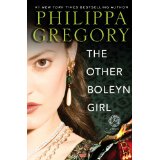Absolutely wonderful for book club. Although my professors at Rutgers University were not happy with the historical accuracy of the novel, it brings the reader back to 1521 to the Renaissance and the time of Michelangelo and Da Vinci, and to the man who would break away from the all-powerful Roman Catholic Church for the love (or lust) of a woman.
The novel opens with a beheading of a nobleman and good friend to the king, who dared to insult the king about having no male heir. The nobleman also erred by retaining too large an army – an obvious threat to the security of the king. Nobleman retained armies to fight the king’s wars, but were not allowed to maintain large armies. The beheading creates the foreshadowing of events to come.
Philippa Gregory brings the reader to Tudor England in the early 1500’s in this historical fiction. The novel is based on real people and circumstances, and it begins with and centers on the life of a relatively unknown person, Mary Boleyn. Mary Boleyn is, of course, the sister of the infamous Ann Boleyn, who captivated Henry VIII. Henry’s desire for Ann (according to the novel) made him break with tradition, divorce his wife, and start the Church of England. However, Mary Boleyn was the king’s mistress before Ann and bore him children. The intrigue of the royals and their entourage keeps the reader enthralled through the entire story.
Our book club enjoyed this book. It gave us a chance to see how women lived during the Renaissance. Women were a step above, but only barely, servants. Unfortunately, it will be a long time until women have equality. But, throughout the novel you do see women begin to question their station in life. Ann has actual power for a time, and it does set the stage for change and for the future Queen of England, her daughter, Elizabeth, and all women. Ann paid the ultimate price for the power she managed to obtain.
The historical events did take place, but the who, the what, and the why are done by a fiction writer’s eye for creating a story, which keeps the readers’ interest and makes for a compelling story. The book inspires lively discussions regarding just how insignificant a woman’s role was in the Renaissance period, the ultimate price paid by Ann who was viewed as such a threat, and Henry VIII’s hubris, which accelerates without the constraints of some higher power (as the Roman Catholic Church had served).
Rating: 8
